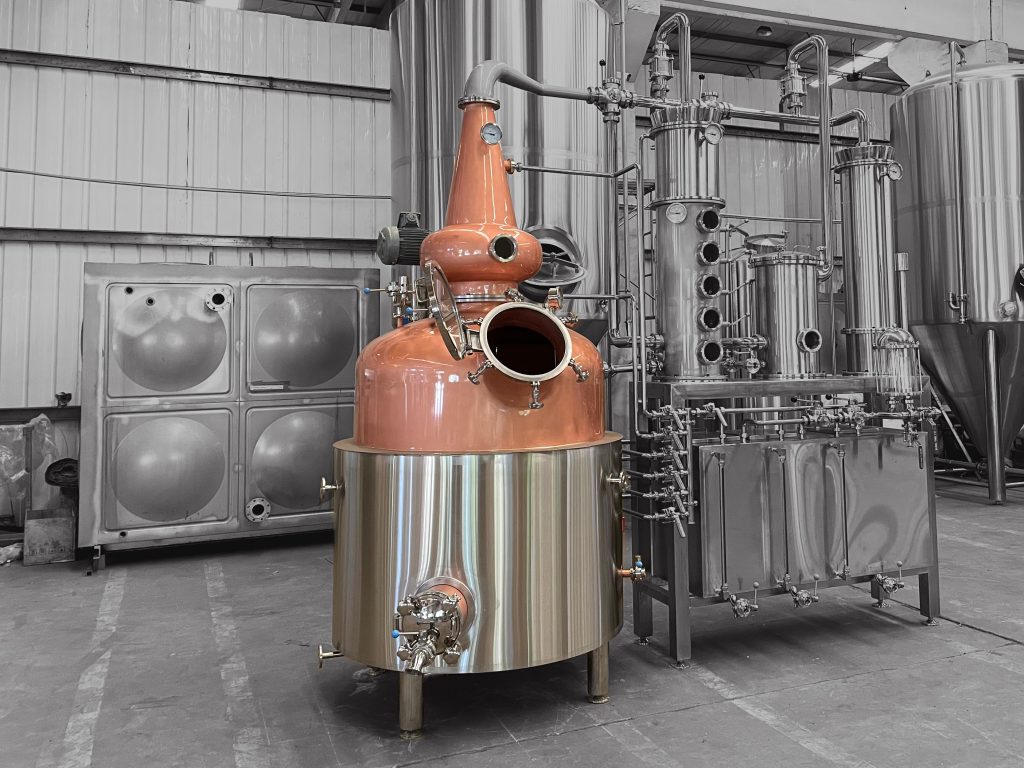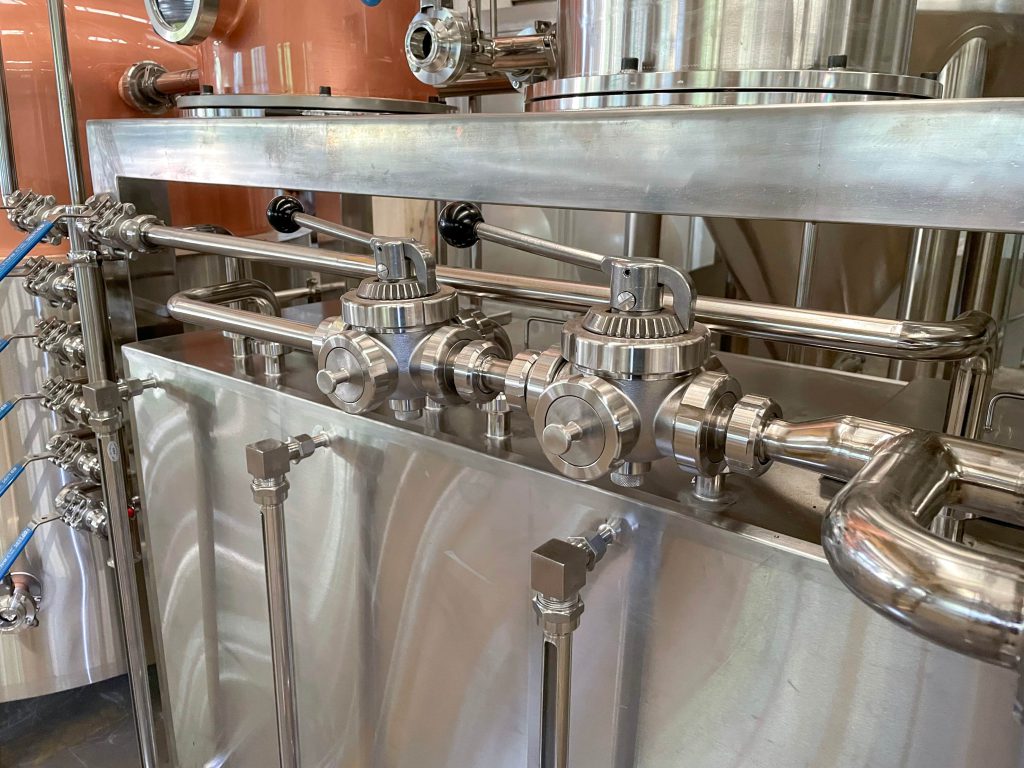Introduction

In the world of spirits, the quest for exceptional flavor is paramount. Among the various distillation methods, pot still distillation stands out as a time-honored technique that yields spirits of remarkable complexity and character. This blog post delves into the intricacies of pot still distillation, exploring its advantages, processes, and the resulting flavor profiles that make it a preferred choice for discerning connoisseurs.
Pot still distillation is a batch process that involves heating a fermented liquid, known as wash or wort, in a pot still. The resulting vapors are then condensed back into a liquid, concentrating the alcohol and flavor compounds. This method, while more labor-intensive and less efficient than continuous column distillation, allows for greater control over the distillation process, resulting in spirits with a rich tapestry of flavors.
The Art and Science of Pot Still Distillation
Pot still distillation is a delicate balance of art and science. The shape and size of the pot still, the speed of distillation, and the cuts made by the distiller all play a crucial role in shaping the final product.
The Anatomy of a Pot Still
A traditional pot still typically consists of a pot, a head, a lyne arm, and a condenser. The pot is where the wash is heated, while the head and lyne arm guide the vapors towards the condenser. The condenser cools the vapors, turning them back into a liquid.
The Distillation Process: A Step-by-Step Guide
The pot still distillation process involves several key steps:
- Charging the still: The wash is poured into the pot, filling it to a specific level.
- Heating: The pot is heated, causing the alcohol and other volatile compounds to vaporize.
- Vapor separation: The vapors rise through the head and lyne arm, separating into different fractions based on their boiling points.
- Condensation: The vapors enter the condenser, where they are cooled and condensed back into a liquid.
- Making the cuts: The distiller carefully separates the distillate into three fractions: the heads, the heart, and the tails. The heart, which contains the most desirable flavors, is collected for aging or bottling.
Understanding the Cuts: Heads, Heart, and Tails
The cuts made during pot still distillation are critical in determining the quality of the final spirit.
- Heads: The first fraction to come off the still, containing volatile compounds such as methanol and acetaldehyde. Heads are typically discarded due to their unpleasant flavors and potential toxicity.
- Heart: The middle fraction, containing the most desirable flavors and aromas. The heart is carefully collected and used to produce the final spirit.
- Tails: The final fraction, containing heavier compounds such as fusel oils. Tails can impart undesirable flavors and aromas, so they are often discarded or redistilled.
The Flavor Advantage: Why Pot Still Distillation Matters
Pot still distillation offers several advantages over other distillation methods, particularly in terms of flavor complexity and richness.
Enhanced Flavor Complexity
Pot still distillation allows for the retention of a wider range of flavor compounds compared to continuous column distillation. This is because the batch process allows for greater interaction between the vapors and the liquid, resulting in a more complex and nuanced flavor profile.
Richer Texture and Mouthfeel
Spirits produced through pot still often exhibit a richer texture and mouthfeel. This is due to the higher concentration of congeners, which are compounds that contribute to the flavor and aroma of spirits.
Unique Character and Terroir
Pot still distillation can impart a unique character and terroir to spirits, reflecting the specific ingredients and environment in which they were produced. This is particularly evident in whiskies and cognacs, where the use of local grains and grapes, as well as the specific shape of the still and the local environment, can contribute to the unique flavor profile.
Pot Still Distillation: A Comparative Look
To illustrate the differences between pot still and other methods, let’s consider the following table:
| Feature | Pot Still Distillation | Column Still Distillation |
|---|---|---|
| Process | Batch | Continuous |
| Flavor Complexity | High | Lower |
| Congener Concentration | High | Lower |
| Efficiency | Lower | Higher |
| Typical Products | Whisky, Cognac, Rum | Vodka, Gin, Neutral Spirits |
| Control | Higher | Lower |
The Role of Copper in Pot Still Distillation
Copper plays a vital role in pot still distillation, acting as a catalyst and removing unwanted compounds.
Copper’s Catalytic Properties
Copper catalyzes the removal of sulfur compounds, which can impart unpleasant aromas to spirits. It also helps to convert undesirable aldehydes into more desirable esters, contributing to the fruity and floral notes in the final product.
Copper’s Impact on Flavor
The interaction between the vapors and the copper in the pot still can significantly impact the flavor of the final spirit. Different pot still designs and copper surface areas can result in varying levels of copper interaction, leading to diverse flavor profiles.
Pot Still Distillation and Aging
Pot still distillation often produces spirits that benefit from aging. Aging in oak barrels allows the spirit to further develop its flavor and complexity, as it interacts with the wood and extracts various compounds.
The Aging Process
During aging, the spirit undergoes several transformations, including:
- Extraction: The spirit extracts compounds from the oak, such as vanillin, tannins, and sugars.
- Oxidation: The spirit interacts with oxygen, leading to the development of new flavors and aromas.
- Evaporation: Some of the spirit evaporates, concentrating the remaining flavors.
The Impact of Aging on Pot Still Spirits
Aging can enhance the complexity and depth of pot still distillation spirits, adding notes of vanilla, caramel, spice, and dried fruit. The length of aging and the type of oak used can significantly impact the final flavor profile.
Pot Still Distillation: A Global Perspective

Pot still distillation is practiced around the world, with each region and culture contributing its unique traditions and techniques.
Scotch Whisky: A Pot Still Tradition
Scotch whisky, renowned for its complex and smoky flavors, is almost exclusively produced using pot still distillation. The specific shape of the pot stills, the local barley, and the peat used in malting all contribute to the unique character of Scotch whisky.
Cognac: The Art of Double Distillation
Cognac, a French brandy, is produced through double pot still distillation. The use of specific grape varieties, the double distillation process, and the aging in French oak barrels result in a spirit of exceptional finesse and complexity.
Rum: A Diverse Pot Still Heritage
Rum, produced from sugarcane, is made using both pot still distillation and column distillation. Pot still rums are known for their rich and robust flavors, reflecting the diverse terroirs and traditions of rum-producing regions.
Conclusion
Pot still distillation is a time-honored technique that yields spirits of exceptional flavor and complexity. Its ability to retain a wide range of flavor compounds, impart a richer texture, and reflect the unique character of its ingredients and environment makes it a preferred choice for discerning connoisseurs. As the spirits industry continues to evolve, pot still distillation remains a testament to the art and science of distillation, producing spirits that embody the passion and dedication of their creators.
FAQ
What is the difference between pot still and column still distillation?
Pot still distillation is a batch process that yields spirits with a rich and complex flavor profile. Column still distillation is a continuous process that produces a more neutral and higher-proof spirit.
Which spirits are typically produced using pot still distillation?
Whisky, cognac, rum, and some types of gin are commonly produced using pot still distillation.
What are the advantages of pot still distillation?
Pot still distillation allows for greater control over the distillation process, resulting in spirits with enhanced flavor complexity, richer texture, and unique character.

